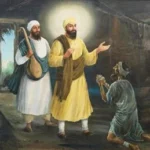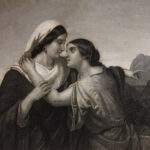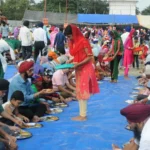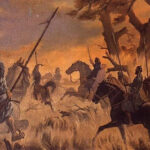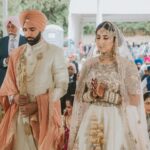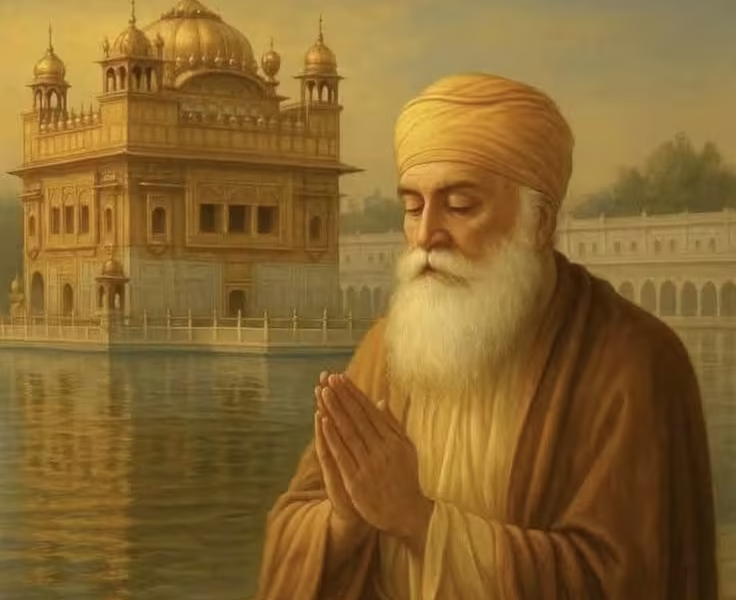The word ‘Phulkari’ translated into ‘flower work’, and has a history etched in the Punjab culture. Rotating from the charkha this elaboration spectacular style is patterned on odinis, kurtis, shawls, and chunris. The basic feature of the phulkari dupatta is the usage of the darn stitch on the cloth backside. The initial reference of the Phulkari dupatta is being remarked about in the popular mythology of Punjabi Heera Ranjha. Every Punjabi girl has Phulkari as the dream weaver.
Phulkari was brought to India by the Central Asia Jat People; however, the patterns were not mentioned in texts but transmitted by word of mouth. This tradition was not connected with sikh but muslims and hindus. The foremost mention of Phulkari is found in the folklore of Heera Ranjha Punjab. The embellishment was a mere reflection of a woman’s life and every woman had her way to represent herself.
It was an art that offered full freedom of creativity. Motifs utilized were an adroit representation of sundry values of Punjab and the dear. Since it was necessary that shades, communal activity, and colors were somewhat run-of-the-mill, however, the reality that most of the women were specialists in Phulkari would even make average looking exquisite.
There are several types of Phulkari Embroidery:
Thirma: It is considered to be the purity symbol which is worn by widows and elderly women.
Darshan Dwar: This pattern of Phulkari Embroidery was designed keeping in mind females going to the temple.
Bawan Bagh: Mosaic of fifty¬two different patterns which is the rarest of all and decorating the piece.
Chope: It is an added type of Phulkari Embroidery which is pretty much utilized only with one color specially on the border.
Surajmukhi: It represents Sunflower which is a major Phulkari structure or good to say pattern.
Kaudi Bagh: Chains of tiny white squares represent stylized cowries.
Panchranga: Decorated with chevrons of 5 different colours.
Satranga: Decorated with chevrons of 7 different colours.
Meenakari: Constructed up of white pigment pat and gold, is honour with tiny multi-coloured lozenges referred to enamel working (meenakari).
The Phulkari is still a pretty much vital and integral chunk of Punjab culture. It is immensely vital to keep the customary handicrafts alive. However, to keep this art alive, recreate the embroideries in styles that look follow classic processes and current. Phulkari dupatta is still extremely famous not only among the Punjabi’s but across the Globe and India. From the mere domestic art form, it has earned a place on international designers and couture collections! Interested in the realness of our country Fashion signifies only that brightened days for phulkari decoration is around the corner.
The term Phulkari is the Punjabi term acquired from 2 words: ‘Phul’ and ‘Kari’ signify work and flower and so the naming Phulkari translated into floral work or flower work. The Phulkari embroidery first started in Punjab in the 15th century by the Punjab women. It is also signified as the Punjab folk embroidery and rural handmade embroidery Punjab tradition. Even though Phulkari signify work in floral, the designing in the embroidery comprising not only flowers but too involved distinct dimensional and motifs designs and structures. The Phulkari embroidery is pretty much very brightened, vibrant and it brings out color to human lives. The Phulkari embroidery is very famous worldwide. It was built up by women and it celebrates womanhood.
There are certain theories about the Phulkari origin. It was believed that the Phulkari embroidery was prevalent in different chunks of the nation but it only survived in Punjab. Another theory is that the Phulkari embroidery comes from Iran. There it was signified as Gulkari, which also denotes floral work. Nevertheless, it was important that the elaboration of the Gulkari style and Phulkari style of embroidery is distinguishing and dissimilar to each other. Few even say that the Jat tribes brought this embroidery to our country when they migrated to India and settled up in Haryana, Punjab, and Gujarat. On the other hand, the word ‘Phulkari’ has its earlier reference in Punjabi literature and 18th century.
Phulkari From Punjab: Embroidery in Transition
This is in Waris Shah’s kind of Heer Ranjha, a traditional Punjabi tragic romance, where the wedding costume of Heer, the girl protagonist, is discussed and they talk about some items of outfits and clothing with the Phulkari embroidery. There is also the reference of Mahabharata Phulkari, a few Punjabi folk songs, the Vedas, and Guru Granth Sahib. Nonetheless, it is faith that no matter what the embroidery origin is, it would always be very unique and different to Punjab. In ancient times in Punjab, the girl child birth in the family was considered pretty auspicious and so, as soon as the girl was born in the family, the grandmothers and mothers would start decorating Phulkaris.

